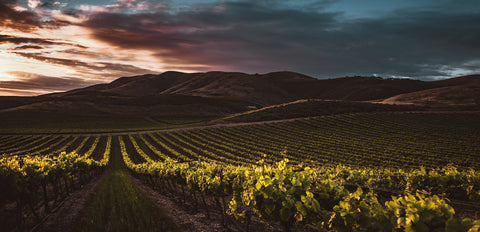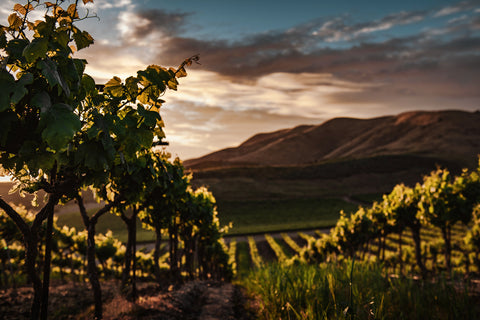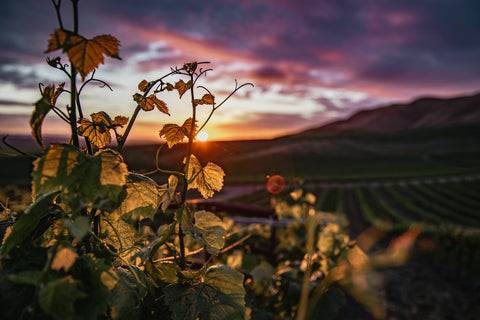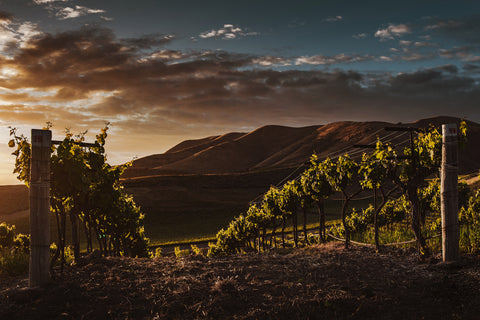

VINEYARDS IN THE SANTA RITA HILLS
In the Exprimere winemaking experiment, the vineyard is nothing more than a constant. But this constant is exceptional. The distinct topography and cool climate of the Santa Rita Hills viticultural area, lying west of Buellton and east of Lompoc in the Santa Ynez Valley, yields the most complex and alluring Pinot Noir fruit on California’s Central Coast. Which enables Exprimere—a concept based on comparisons—to be a wine beyond compare.

ORIGIN STORY
Millions of years ago, the geomorphological force of colliding tectonic plates formed this coastal landscape. The Santa Ynez River traces the fault line beneath it, marking the place where two planes of ancient ocean floor, petrified dunes, and fossilized marine algae pushed together to form the rolling Purisima Hills and the crinkled Santa Rosa Hills. Between these defining borders lie the sloping vineyards and grasslands of the Santa Rita Valley.

ATMOSPHERE
The coastline forms a right angle here, so the Pacific Ocean is only about 10 miles, as the seagull flies, both to the west and to the south. The Santa Ynez Mountains siphon cool fogs and maritime gales through these hills. The west winds blow so forcefully that the grape skins grow defensively thick. Berries are small, yields low. Temperatures are moderate, the growing season remarkably long. As a result, the fruit is layered and dense.

RECONSIDERING TERROIR
Wine lovers tell themselves stories about the earth under vines. They imagine we taste slate in Riesling, chalk in Champagne. But do they, really? We see our soil type as a workable medium where distinctive bacteria and yeasts grow, not a predictor of the aromas and flavors we will find in the glass. We find climate and agricultural practices to be more predictive of a wine’s eventual quality than the minerals sparkling underfoot. And above all else, we’re interested in the question of how a single microterroir, yielding a single batch of grapes, can give rise to two very different expressions of a single grape variety.
COLLECT THE WINES
